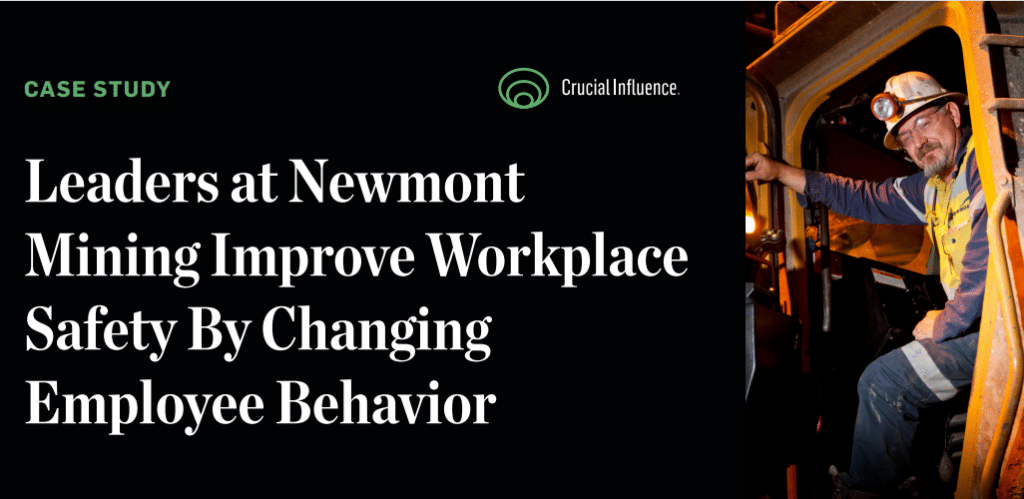Let’s study the below two conversations:
#1
“You’re acting funny. What’s wrong with you?”
“Nothing’s wrong. I’m fine.”
“Are you certain? It sure seems like something’s bothering you.”
“No, no. It’s just that… well, never mind. It’s nothing.”
#2
“You seem upset. Is something wrong?”
“I’ll tell you what’s wrong! Listen!”
“Whoa! There’s no need to get angry.”
“I’M NOT ANGRY!!!”
Do these conversations sound familiar?
Silence and Violence
We’ve all overheard conversations like this. Most of us have been involved in conversations like this, and we know how they usually don’t end very well.
When someone goes SILENT in a tough conversation (as in #1) they back down, cave in, and knuckle under. These conversations almost always fail.
Other times, conversations fail because they go to VIOLENCE. Someone gets hostile or defensive, and they explode in anger, often without realising it (as in #2).
Here’s the tricky part: after remaining silent over a period of time, people tend to move from silence to violence, and it’s not a gradual process. When people go to silence, their problem isn’t solved. When they fail to speak up, their concerns fester, turn ugly, and the person flips from silence to violence.
In order to learn more about how people made this sudden flip, we decided to study this phenomenon in the prison system.
We went inside 23 prisons — each with about 1,000 inmates — to study the criminal records of each prisoner.
How many different crimes do you think the average inmate’s been convicted of?
It turns out, between six and seven. That’s a fair number of crimes.
Then we looked at the records of inmates convicted of murder, and how many different crimes do you think the average murderer’s been convicted of?
Just one — the murder. And almost all of them killed someone they knew — a spouse, a lover, a neighbour, or their boss.
Aside from their criminal record, we were interested in what made the murderers different from the average inmate population. Right from the start, we saw they were pretty different.
On one hand, we have inmates that are professional criminals. On the other hand, we have murderers who are rank amateurs. But they were different in a lot of other ways too.
If you met an average inmate on the street, you’d describe them as self-confident, assured, assertive, willing to ask you for things — like your purse. Whereas the murderers were described by their coworkers, neighbours, and family members as introverted, shy, depressed, bullied, etc.
These are people who go silent when they get in a crucial conversation. It doesn’t get solved, it festers, turns ugly, and they flip. They explode in anger and they kill someone.
This is your basic human tragedy.
A Vicious Cycle
One of the things we discovered is that this doesn’t get better behind bars. In prison, the same pattern happens. The murderers are far more likely to be bullied than the average inmates — to have people steal their mail, magazines and other belongings. They often have the least preferred bunk in their cells and are more likely to have people steal food right off their plates.
How do they handle this in prison?
The same way they handled it before they committed the murder. They turn to silence. They hold in inside, it festers, turns ugly, and then they explode in rage at the prisoners around them.
How do those prisoners around them respond?
By beating the stuffing out of them.
See how this pattern works?
They go to silence, the problem gets worse, so they explode in anger, get beat up, and the next time they have a grievance, they go right back to silence. They get trapped in this cycle.
Now, of course we’re not suggesting that everyone who stays silent in a crucial conversation is on the verge of murder. Many of us fall into the same pattern of silence and violence, but here’s the catch: it’s not our fault.
It’s a design flaw.
Overcoming Our Primitive Nature
It turns out that 98% of the time, we’re good listeners and good communicators. We’re logical, intelligent, and reasonable.
But when we get into a tough conversation, things look a quite bit different.
We’re left to deal with the most complex and challenging conversations of our lives with the same set of skills we would use to deal with a salivating predator.
If you think back over our evolutionary timeframe, we weren’t designed to have crucial conversations with our boss, or our spouse, or an angry customer. We were designed to have crucial conversations with a sabre-toothed cat. The sabre-toothed cat appears on the scene, adrenaline floods our body, and blood rushes to our major muscle groups.
We’re about to fight or flee, right?
Notice how “fight or flight” sounds a lot like “silence or violence”?
It’s not our fault that tense conversations inspire the same reaction. It’s literally in our DNA, but just because something’s “natural” doesn’t mean it’s “healthy”. Just ask those prisoners guilty of murder.
One thing is for certain: there will always be high-pressure situations that require us to have tough conversations. There’s nothing we can do to change that.
What we can control is how we prepare ourselves for those moments, so we rise above our nature and achieve a healthy outcome, which is exactly why VitalSmarts exists.





